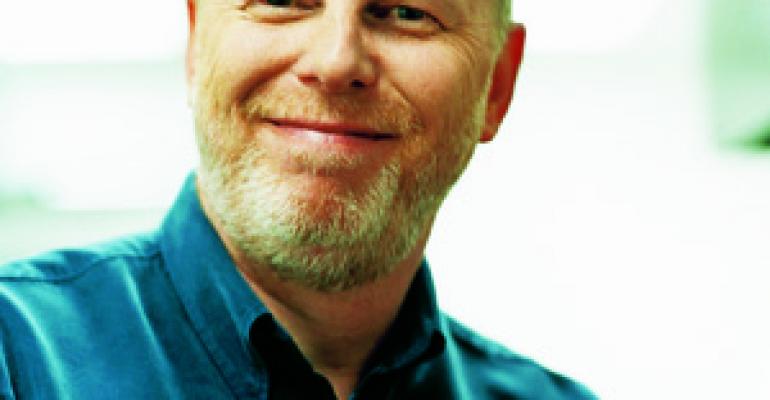CKE Restaurants executive vice president Brad Haley knew that offering big burgers and running snazzy commercials for his company’s Carl’s Jr. and Hardee’s chains earned the loyalty of its “young hungry guy” target customer.
But he says the challenge of developing marketing programs to convert those good feelings into sales growth required CKE to find a way to make loyalty pay off easily.
“The loyalty program has been around since the dawn of marketing, but very few have survived for long periods of time,” Haley said. “They either become difficult to manage, or consumers lose interest and don’t want to manage physical tickets or punch cards. So eventually they just fall apart on their own.”
CKE adopted loyalty systems that essentially managed themselves by partnering with a longtime vendor’s existing program, Coca-Cola’s My Coke Rewards, which helped the company refine the rewards structure for its proprietary location-based mobile app, Happy Star Rewards.
During a summer promotion, Hardee’s and Carl’s Jr. offered special 42-ounce soft drinks with peel-off game pieces awarding My Coke Rewards points and free-food prizes within the restaurants. CKE and Coke awarded more than 50 million points, including two grand prizes of 10,000 points each to individual winners.
With the new Happy Star Rewards app, which is set to launch next month, users can locate the nearest Hardee’s or Carl’s Jr. unit and “check-in” to earn a spin on CKE’s “Wheel of Awesome.” Random awards will range from free food and discounts to prizes from the brands’ promotional partners like merchandise from Carl’s Jr.’s “Green Hornet” tie-in.
Haley spoke with Nation’s Restaurant News about what consumers want in exchange for their loyalty.
How did the partnership with Coca-Cola in My Coke Rewards come about?
We’ve had a long partnership with Coca-Cola, and we work very closely with them to develop promotions that are mutually beneficial to them and both of our brands. One of the great assets they had at their disposal was My Coke Rewards, which at the time I think had 14 million members and 4.5 million unique visitors to its website each month. The opportunity was there for us to leverage its built-in customer base and to give our customers a chance to increase the number of points they can earn by frequenting Hardee’s and Carl’s Jr.
What did you learn from Coke about loyalty programs that informed how you developed Happy Star Rewards?
We picked their brains to help us craft the reward structure for the Happy Star Rewards mobile app. One of the things they’ve done really well is having a robust prize structure, not just with Coke prizes you can win but also a large number of third-party goods and services people can redeem their points for. One reason it’s so popular is that it’s fairly easy to earn enough points to receive a premium of some kind, and it’s got a wide variety of prizes from Coke and non-Coke companies.
When location-based social-media platforms emerged, they were seen as a new sort of loyalty program, since users earned recognition for visiting restaurants often. Why did CKE create its own Happy Star Rewards app rather than tie a program to Foursquare or Gowalla’s existing template?
First of all, we began development on this quite a while ago, when Foursquare was fairly new and Facebook didn’t have its Places functionality yet. So we really needed to develop our own by necessity. But by the same token, we wanted an app that had all the functionality that we thought consumers would want all in one place: a restaurant locator, menu and nutrition information, and a content tab so you could view commercials.
Of course, we also wanted a prize structure we could control. It’s built around the Wheel of Awesome, so it integrates with what we already do on Facebook. Having said all that, we knew it was important to make the app interactive with other social-media platforms. We worked with Facebook, Foursquare and Twitter from the beginning so that you could share your spin on the wheel across all those networks.
There’s another aspect, and the best analogy I have for it are those plastic loyalty cards you get at your grocery store. The first one is to get you to put a fob on your keychain win, because after that people aren’t going to carry 20 tags on their keychain. If you can be the first with a dedicated app on mobile devices, it’s a huge advantage. That’s why we did it on our own and didn’t wait for the cooperative services.
Before, loyalty program rewards were pretty rigid and predictable — buy nine subs, get the 10th free. But spinning the wheel for a prize, and getting random extra spins for more check-ins, introduces some unpredictability that seems to spur more frequent repeat visits.
The random nature of it makes it more dynamic for people. If you get a free French fry every fourth visit, after the second freebie you pretty much know what the program is. But we have an escalating scheme, where you have a chance to win something each time but you unlock higher-level prizes the more you go. So if we have a new product and want people to try it, we may put it on the wheel and give customers a chance to spin for free. It’ll keep the app fresh and the desire to come back to it to find out what’s new and different. Developing our own location-based rewards system gave us that flexibility.
Contact Mark Brandau at [email protected].

